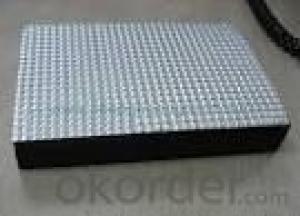Sandwich panels are a revolutionary approach to modern construction, offering a myriad of benefits that traditional building materials simply cannot match. These panels, composed of two outer layers and a lightweight insulating core, have been gaining popularity in various industries for their versatility, sustainability, and energy efficiency. In this article, we’ll explore the world of sandwich panels, delving into their applications, advantages, and the technology behind them.
The Wonders of Sandwich Panels
Sandwich panels are not just a construction material; they are a testament to human ingenuity and innovation. The concept of sandwich panels is inspired by the classic sandwich, with two strong outer layers protecting a soft, insulating core. This design allows for a lightweight yet robust structure that can be easily transported and installed.
Versatility in Action
One of the key features of sandwich panels is their versatility. They can be used in a wide range of applications, from residential and commercial buildings to industrial facilities and even in the transportation sector. Whether you’re constructing a new home, a warehouse, or a vehicle body, sandwich panels offer a customizable solution to meet your specific needs.
Sustainable Construction
In today’s world, where sustainability is of utmost importance, sandwich panels stand out as an eco-friendly alternative. They are made from recyclable materials and can significantly reduce energy consumption during the construction process. Moreover, their insulating properties contribute to lower energy usage in the finished building, promoting a greener environment.
Energy Efficiency
The insulating core of sandwich panels plays a crucial role in maintaining a comfortable indoor temperature, reducing the need for heating and cooling systems. This not only saves energy but also translates to cost savings for the building owners. The panels’ ability to regulate temperature also contributes to a healthier living and working environment.
The Science Behind Sandwich Panels
The technology behind sandwich panels is fascinating. The outer layers are typically made from materials like metal, concrete, or composites, which provide strength and durability. The core, on the other hand, can be made from various materials such as polystyrene, polyurethane, or mineral wool, depending on the desired insulation properties. The manufacturing process involves bonding these layers together under high pressure and temperature, ensuring a strong and stable structure.
Installation and Maintenance
Installing sandwich panels is a breeze compared to traditional construction methods. They are lightweight and can be easily transported to the construction site, reducing the need for heavy machinery. The panels can be quickly assembled, significantly reducing the construction time and labor costs. Maintenance is also minimal, as the panels are resistant to corrosion, moisture, and pests.
Aesthetic Appeal
Sandwich panels are not just functional; they also offer an aesthetic appeal. With a wide range of colors, textures, and finishes available, they can be tailored to match the design of any building. Whether you prefer a modern, sleek look or a more traditional style, sandwich panels can be customized to suit your taste.
The Future of Construction
As the construction industry continues to evolve, sandwich panels are poised to play a significant role in shaping the future. Their combination of strength, sustainability, and energy efficiency makes them an ideal choice for forward-thinking architects and builders. With ongoing research and development, we can expect to see even more innovative uses for these panels in the years to come.
Embracing the Sandwich Panel Revolution
In conclusion, sandwich panels represent a modern approach to construction that offers numerous benefits over traditional materials. Their versatility, sustainability, and energy efficiency make them an attractive option for a wide range of applications. As we move towards a more sustainable future, embracing sandwich panels is not just a smart choice; it’s a necessary one. So, let’s dive into this revolution and explore the endless possibilities that sandwich panels have to offer.

